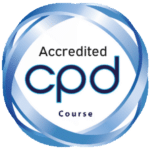Safety In Process Design Training Course
Consultant/Trainer: Ronald Holleboom & Louk Kuijten / Johan Jainudin
In an era of increasing energy demand, stricter regulations, and growing public scrutiny, the consequences of process safety failures are more severe than ever. Explosions, toxic releases, and costly shutdowns continue to make headlines—could your design withstand real-world challenges?
The CPD-accredited Safety in Process Design course equips engineers with the expertise to design inherently safer processes. Learn from industry veterans, analyze real-world case studies, and master techniques that help prevent disasters before they happen.
Are you ready to design for safety? Join the next session and take the first step toward safer, more sustainable operations.
The CPD-accredited Safety in Process Design course equips engineers with the expertise to design inherently safer processes. Learn from industry veterans, analyze real-world case studies, and master techniques that help prevent disasters before they happen.
- Minimize risk
- Enhance reliability
- Ensure compliance
Are you ready to design for safety? Join the next session and take the first step toward safer, more sustainable operations.

Participants
This course is essential for professionals involved in process design, safety, and risk management, including:
Process Engineers – Ensure designs are inherently safe and compliant.
Safety Engineers & HSE Specialists – Strengthen risk assessment and hazard mitigation strategies.
Project Engineers & Managers – Improve project safety from the ground up.
Operations & Reliability Engineers – Bridge the gap between design and operational safety.
Regulators & Compliance Professionals – Gain insights into best practices and industry standards.
Process Engineers – Ensure designs are inherently safe and compliant.
Safety Engineers & HSE Specialists – Strengthen risk assessment and hazard mitigation strategies.
Project Engineers & Managers – Improve project safety from the ground up.
Operations & Reliability Engineers – Bridge the gap between design and operational safety.
Regulators & Compliance Professionals – Gain insights into best practices and industry standards.


Learning Objectives
As a participant, you will gain essential skills to design safer, more reliable processes and reduce risk. You’ll learn to apply inherent safety principles, conduct risk assessments using methods like HAZOP and LOPA, and understand safety systems such as alarms, interlocks, and SIS. Through real-world case studies, you’ll identify common design flaws and learn best practices to prevent incidents. The course also covers regulatory compliance, safety standards, and hands-on applications to ensure you can proactively design for safety, improve operational reliability, and foster a strong safety culture in your organization.
Day 1
Day 2 Codes and standards for Safe Design, active protection
Day 3 Continue active protection, Passive protection / escalation control
Day 4 Static electricity, reactive hazards, fire and explosions
Day 5 Management of Change, Process safety culture
- Kick off, introductions, course objectives and expectations
- Process Safety versus personal safety; history of process safety developments and industry major incidents
- Process safety Management Processes including risk management
- Hazard identification, Bowtie, LOPA, ALARP, Hierarchy of Controls, process safety Critical Elements, Activities, Positions
- Group Exercise
Day 2 Codes and standards for Safe Design, active protection
- Safe Design: pressure and temperature
- Overpressure protection, flare systems
- Overtemperature protection: emergency depressuring
- Material selection and degradation
Day 3 Continue active protection, Passive protection / escalation control
- Safeguarding Instrumented Functions
- Release Detection Systems, ROV, TSO
- Fire protection
- Area Classification/ATEX/Site Lay out
- Exercise (optional)
- Safeguarding Memorandum
Day 4 Static electricity, reactive hazards, fire and explosions
- Static electricity
- Reactive hazards
- Flammability, Ternary Diagrams
- Exercise(s)
- Types of fires/explosions (VCE, BLEVE, Flash, Pool), dispersion, toxicity
- Process and Operational Safety/MOC/Transient conditions
Day 5 Management of Change, Process safety culture
- MOC exercise(s) – Risk Screening Form
- Getting the right Process Safety Culture
- Process Safety Fundamentals
- Measuring the health process safety: leading, lagging indicators (pyramid)
- Process Safety Reviews
- Discussion of client specific subject(s)
Programme
Day 1
Day 2 Codes and standards for Safe Design, active protection
Day 3 Continue active protection, Passive protection / escalation control
Day 4 Static electricity, reactive hazards, fire and explosions
Day 5 Management of Change, Process safety culture
- Kick off, introductions, course objectives and expectations
- Process Safety versus personal safety; history of process safety developments and industry major incidents
- Process safety Management Processes including risk management
- Hazard identification, Bowtie, LOPA, ALARP, Hierarchy of Controls, process safety Critical Elements, Activities, Positions
- Group Exercise
Day 2 Codes and standards for Safe Design, active protection
- Safe Design: pressure and temperature
- Overpressure protection, flare systems
- Overtemperature protection: emergency depressuring
- Material selection and degradation
Day 3 Continue active protection, Passive protection / escalation control
- Safeguarding Instrumented Functions
- Release Detection Systems, ROV, TSO
- Fire protection
- Area Classification/ATEX/Site Lay out
- Exercise (optional)
- Safeguarding Memorandum
Day 4 Static electricity, reactive hazards, fire and explosions
- Static electricity
- Reactive hazards
- Flammability, Ternary Diagrams
- Exercise(s)
- Types of fires/explosions (VCE, BLEVE, Flash, Pool), dispersion, toxicity
- Process and Operational Safety/MOC/Transient conditions
Day 5 Management of Change, Process safety culture
- MOC exercise(s) – Risk Screening Form
- Getting the right Process Safety Culture
- Process Safety Fundamentals
- Measuring the health process safety: leading, lagging indicators (pyramid)
- Process Safety Reviews
- Discussion of client specific subject(s)